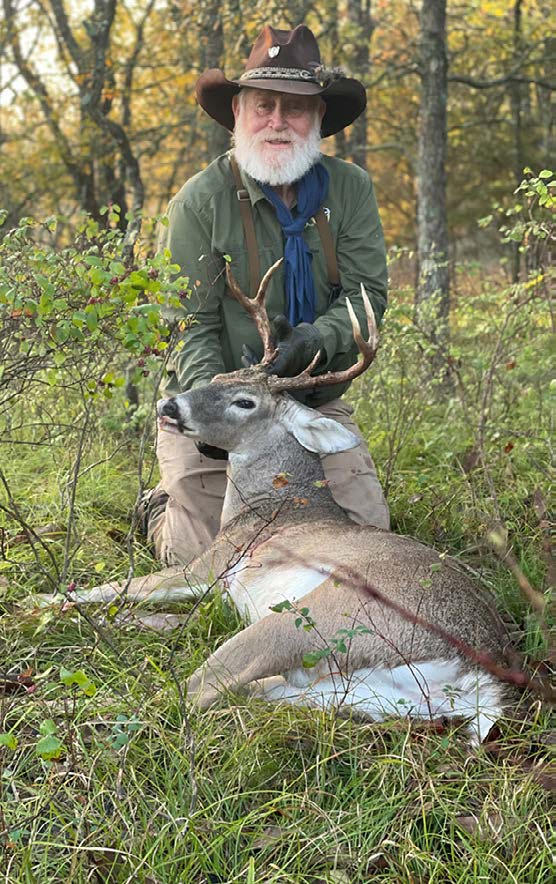“Would you shoot or pass? And if you’d shoot him, why?”
Those questions were asked of me by a bowhunter as he handed me a trail camera photo, right after I had finished a presentation to the monthly meeting of the Dallas Safari Club. I inspected the deer in the photo. As I looked closely, the hunter continued, “And in your opinion, what’s the difference between a management buck and a trophy buck?”
I smiled and asked, “Do you also want me to guess your age and weight?”
“OK, O Great Wise One,” came the retort, as my questioner smiled. He continued, “Seriously, where do you draw the line between a management buck and a trophy buck?”
Here’s what I told him. “To me, every animal I have ever taken is a trophy. The term “trophy” has nothing to do with the size of the animal, rack or horns; instead, it’s the circumstances of the hunt, the people I hunted with, what went into the taking of the animal and the overall experience.” The questioner nodded in agreement.
The buck he was asking about had a seven-point rack. The buck’s main beams were spread well outside of his ears, and he had decent mass. I judged him to be mature, based on body confirmation: a thick neck, sagging skin about the face, and a swayed back and belly line. But I wanted more information before I gave him a definitive answer.
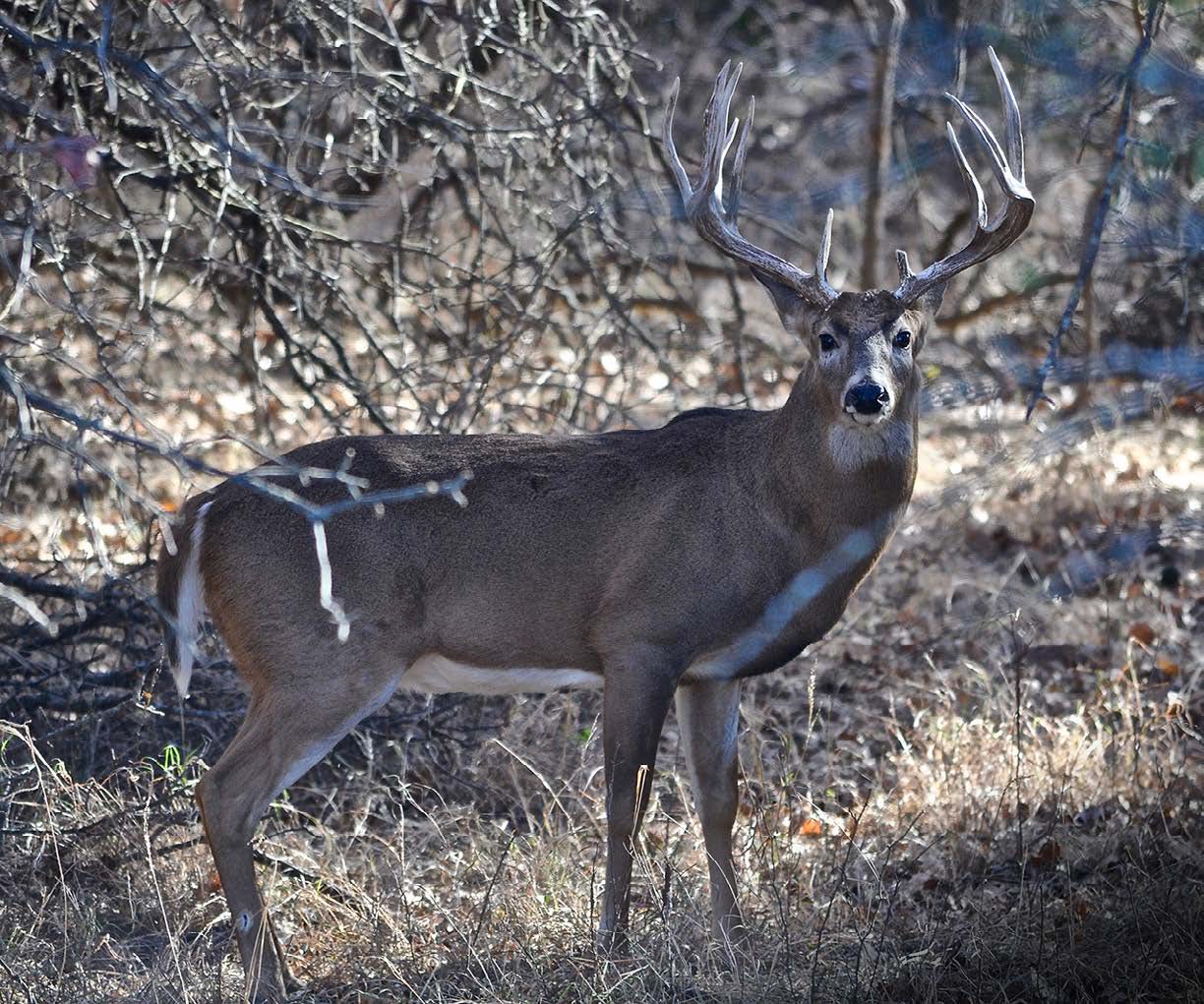
Questions for Him
“What’s the goal of the property where the photo was taken,” I asked. “Are the hunters on the property interested in simply good hunting or do they want to produce bigger- bodied and antlered deer, a healthy population, or the best possible big-antlered bucks? And if the land is leased, does the landowner agree with the hunters’ objectives and goals? Will he lease them the property for the number of years and beyond it will take to achieve those objectives and goals?”
My new acquaintance nodded and explained the hunting group wanted to improve the quality of the deer herd and produce bigger-antlered bucks than currently existed on the property. He assured me the landowner had the same goal and was willing to make adjustments to cattle numbers and grazing practices to improve the range. He said the owner would allow the establishment of several large food plots within the interior of the property, including supplemental feeding if the hunters wanted. He also said the owner would provide a long-term lease agreement so this could be accomplished, and so that those who helped attain these goals could reap the benefits of the time and efforts they had invested.
Before getting into specifics about my definition of management bucks, I asked about the hunting group’s willingness to shoot does and pass younger bucks. “Yes!” came his immediate reply. Next, we talked about buck-to-doe ratios, adult deer densities, total deer densities, fawn survival rates, percentage of mature bucks within the deer herd, and how these data could be gathered—no small chore in itself.
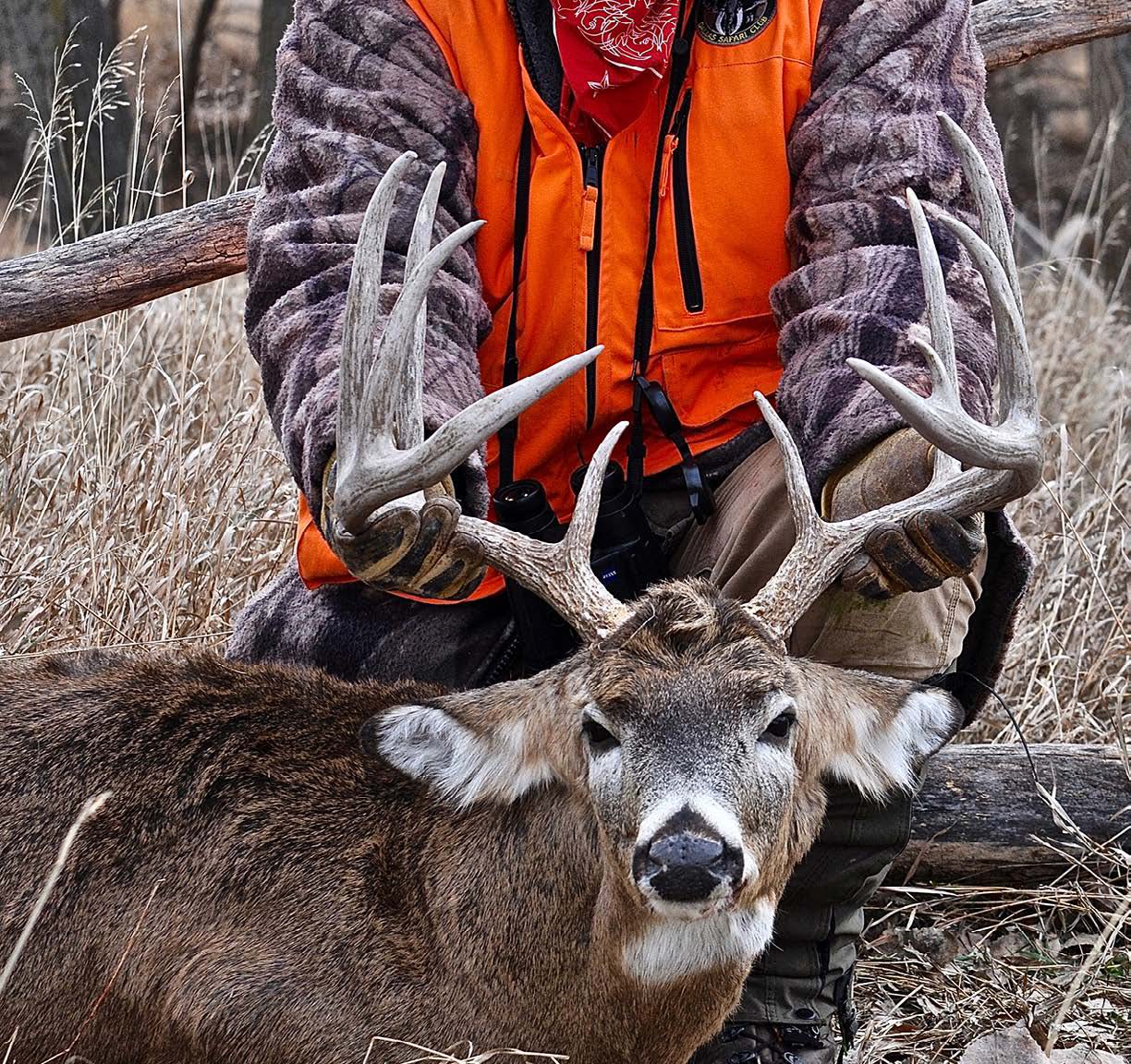
Offering Opinion
Then I began to offer my perspectives. I told this questioner, “First let’s address spikes as management bucks. The one thing I can guarantee you about spikes is, if you shoot a spike buck, he’s never going to get any bigger! Whether you concentrate on taking spikes depends on several factors, including range conditions during the antler-growing season and what other yearling bucks look like, as well as deer densities and long-term goals.”
I continued. “Yearling spike bucks in most instances indicate a nutritional problem. I normally recommend leaving spikes alone and concentrating on taking more does, lowering the overall deer density to provide more and better forage for those remaining. When you do so, the number and incidence of spikes tend to decrease.”
“Personally, when it comes to removing what most people call “management bucks” (if indeed there are such deer), I’m more interested in removing mature bucks with six- or seven-point racks and those with badly misshapen racks, such as one side with a screwed-up antler. The latter bucks might likely be misshapen because of an injury. Most of the time they are. Bucks with such antlers caused by injury do not pass on those antler traits to their offspring, but they eat just as much throughout the year as a buck with promise.” I told him, “When I say six- and seven-point bucks, I am not addressing yearling bucks. I’m talking about those bucks at least four years old or older that only have very few points. Sometimes these can be the hardest bucks to find once the hunting seasons begin. They are truly challenging and fun to hunt!”
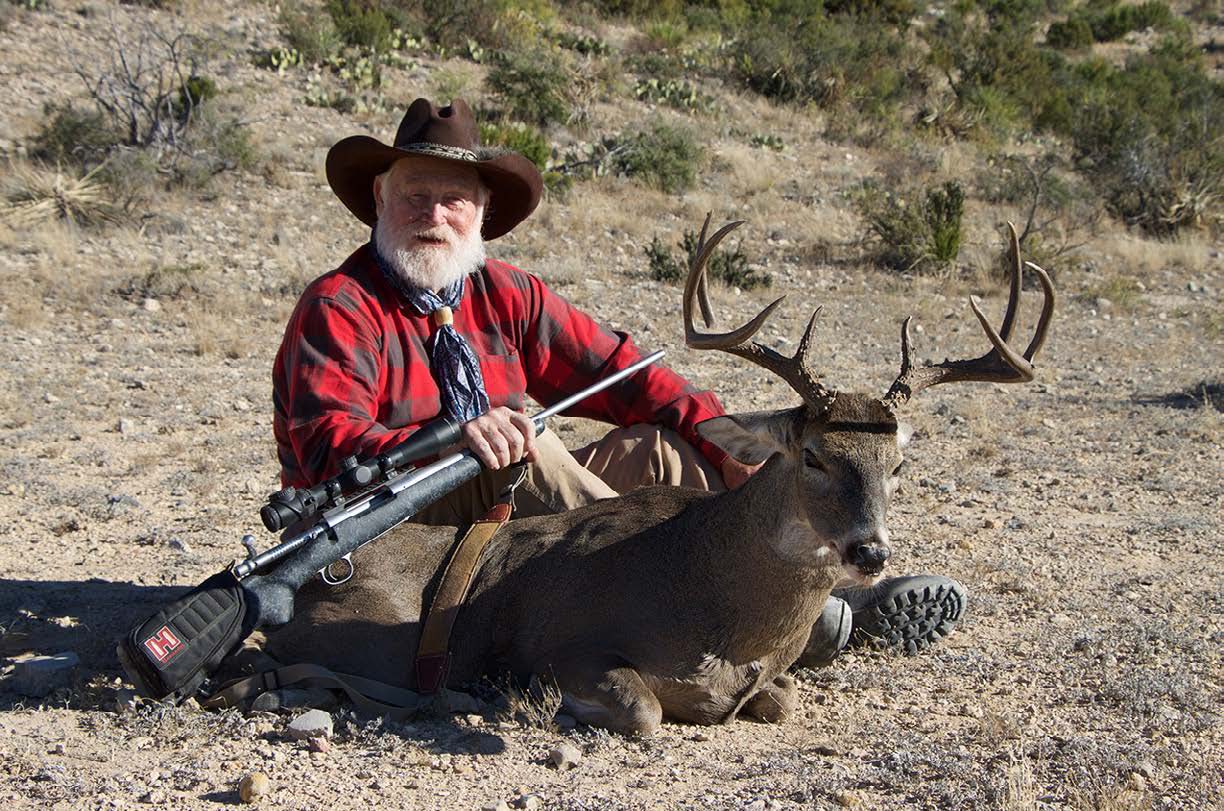
A Six-Pointer Story
I recounted a story from my days managing a ranch where I hunted a particular six-pointer for three years before I finally shot him. In the immediate area, we had seen several bucks having six points, so obviously, that genetic strain was pretty strong. We also shot several does in the area where we saw the six-point bucks to try to reduce his impact in passing along his genes. Once I finally removed him, along with numerous does in the immediate area, the number of mature bucks with six points in that part of the ranch dramatically decreased. It eventually went to essentially zero. But getting the bucks to that point took several years.
I added this: “You also have to remember that most bucks do not necessarily breed true in terms of their antler style. Small-antlered bucks can indeed produce big-antlered bucks. And big-antlered bucks can produce small-antlered offspring.”
Next, I told him that I generally recommend putting hunting pressure on older bucks with less than eight points (“management bucks” if you want to call them that). I cautioned that, just because you remove them, you may not truly have any positive change on the genetics of the local deer herd. Instead, “cull” or “management” bucks should be removed so they will not eat forage that could be eaten by a buck that appears to have greater antler promise. I also offered this: “One thing that often comes into so-called lower-end management bucks is when a hunter sees such a buck and decides to save that deer to be taken by someone else, possibly a guest or family member. When that’s the case, it’s usually the last time that buck is seen during the entire hunting season. Meanwhile, the buck continues to eat valuable forage and pass on his genes for one more year. Never save such a buck for anyone else; take him the first opportunity you legally have to do so,” I urged.
Several others at the event gathered around as the two of us talked. All seemed to be appreciating our conversation. Pointing at the photos, the questioner asked, “So you’re telling me to take this buck?”
“Yes, sir,” I said. “If you’re interested in improving antler quality in the herd, I’d remove that buck the moment I saw him. Chances are he’s the dominant buck in the area. Many think the dominant buck is the one with the biggest antlers…wrong! Dominance has nothing to do with antler size. It has to do with body size (large like a bully or small like a scrapper) and attitude! Remove him. Even if he’s not passing on his genes, he’s eating food a buck with greater promise could be eating.”
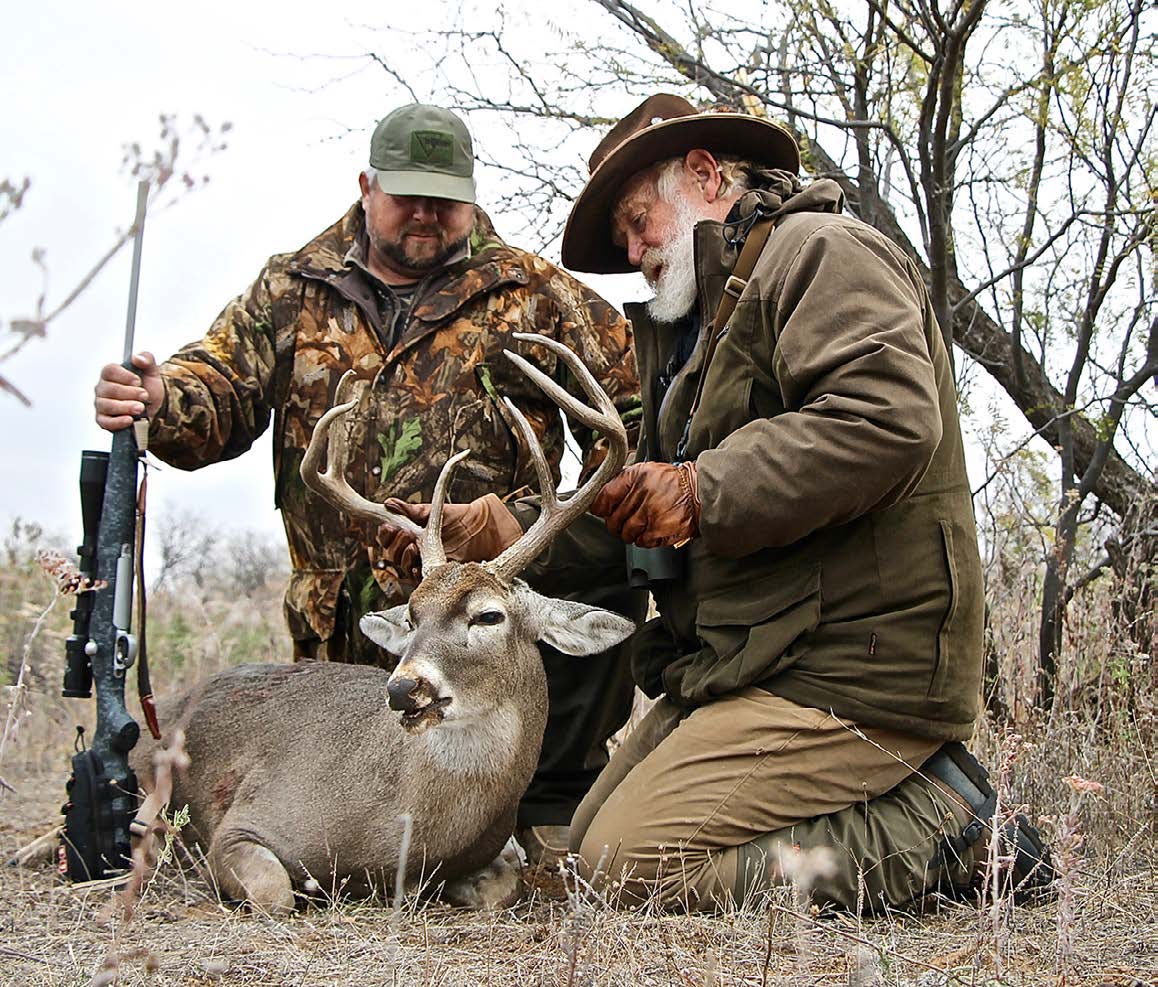
The Next Question
Someone else asked the question, “What about eight-point bucks?” (I knew it was only a matter of time before someone asked about bucks with eight-point racks.) I again offered my thoughts. “Quite often when someone addresses the topic of management bucks, the term “management eight-points” immediately pops up. To be frank, I have seen eight-pointers that I considered upper-end bucks. Any buck that gross scores 140 B&C points in my opinion is an extremely good deer, and any eight-point whose rack scores higher is a great buck! In most management programs, I don’t consider those latter eight-pointers as management bucks,” I responded.
Continuing, I noted that several things need to be considered when it comes to eight-point management bucks. First, I want to know how massive and long their beams and how long and wide are their tines. I want to know if the deer has been an eight-pointer for two or more years in a row once he became four years old or older. I believe that once that buck matures and has a very mediocre eight-rack for a couple of years, I’d consider removing him.
I discussed how, several years ago, I shot a buck in central Iowa. He was essentially a 4-by-4 with a two-inch drop-tine on his left antler. His main beams were 30½ and 31½ inches long. His inside spread was 26 inches with six-inch bases. He grossed 174 B&C. Then I asked, “I don’t think he should be called a management buck, do you?” All those listening negatively shook their heads.
That conversation continued. Next, I told them I do not recommend the wholesale removal of all mature eight-point bucks. The reason why is that I have seen extremely good three-year or four-year with typical 10- and 12-point bucks chase really hard during the rut. They get badly run down and simply cannot recover nutritionally to grow another huge rack the following year. I have seen such bucks with huge, typical 12-point bucks, plus kickers, after a hard rutting year revert to “nice” eight-pointers the following year. After a less stressful rut the following year, they again produce really huge multi-pointed racks. Had the buck been shot as an eight-point management buck, you may well have deprived yourself of a monstrous buck. Unless you know something about a particular eight-point buck, I suggest holding off for a year, particularly if the buck has good mass and long main beams and tines.”
I have also seen 10-pointers that I considered management bucks. I say that because the deer has a lack of mass, short main beams or very short points. I have also seen bucks that lacked brow tines. They should also be considered management bucks, particularly if they are two years old or older. Many yearling bucks that have great promise do not have brow tines as yearlings. If you use the no brow tines issue as a parameter for considering management bucks, make certain the buck did not simply break them off earlier by rubbing or fighting.
In my opinion, the time to start culling big eight-point and even some “little” 10-point bucks should start after you have been in a management program for a few years. But that also depends on the existing deer herd and where you start. If most all the mature bucks on a property are 10-pointers or better, then you might want to raise your management buck parameter level a bit and do so sooner. However, every property is different. There are only a very few definite answers and a whole lot of those need to start with the caveat, “it depends…”
I then discussed recent research that was conducted on a huge ranch in South Texas. It used DNA from hundreds of deer captured and released and their offspring later captured or harvested. They showed that some of the ranch’s biggest-antlered bucks are sired by bucks with less-than-fantastic antlers. The research also noted that the bucks that produce the biggest-antlered offspring may not look anything like the ones they sire.
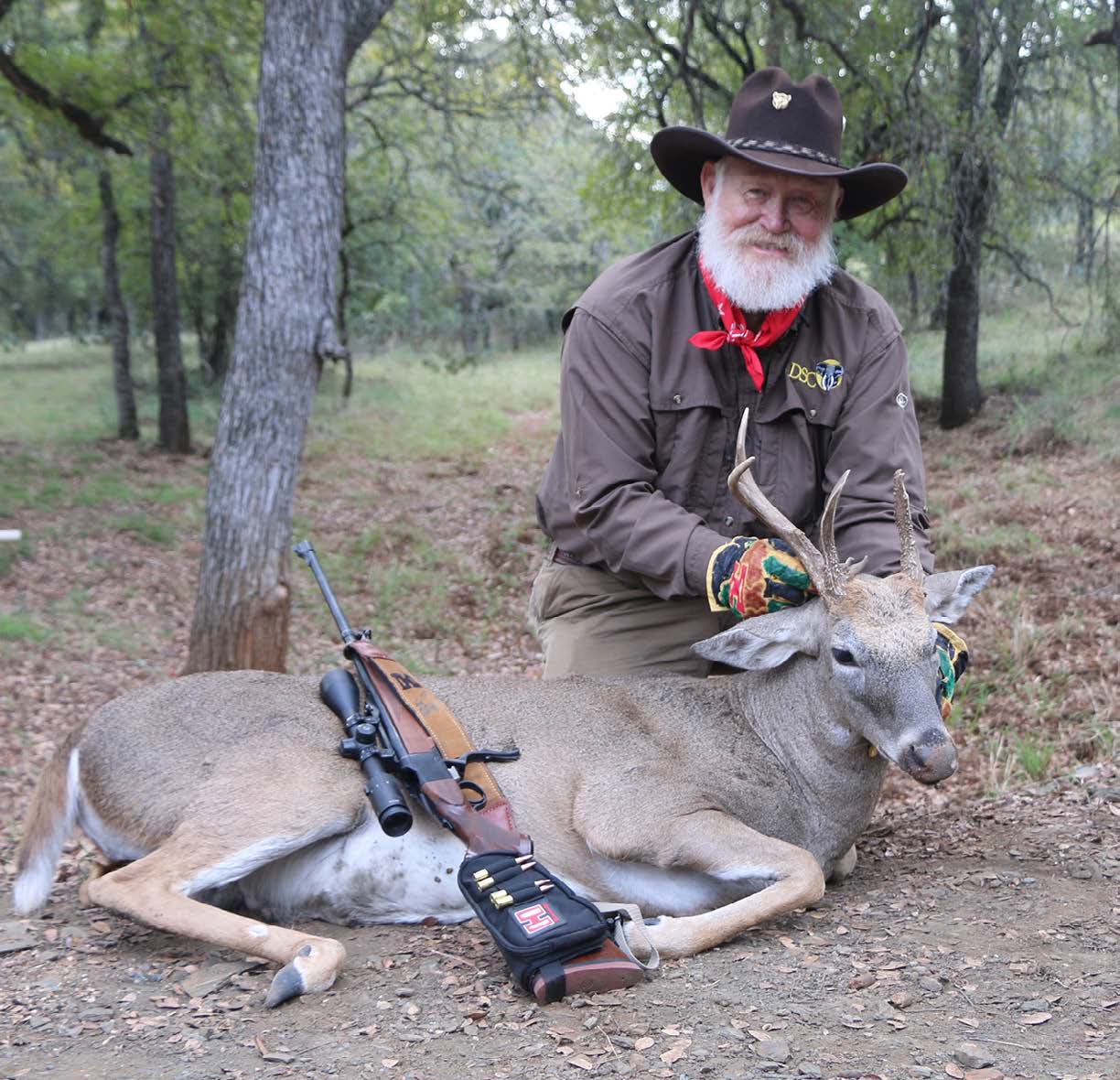
Back to the Start
After all this, my new-found friend shook his head, saying, “Ok, so we’ll shoot that seven-point the first time we see him. We’ll shoot more does and strive to improve nutrition on a daily basis. But you’ve also created more questions about what we should be putting hunting pressure on.”
“Exactly I responded. “Every property and deer herd are slightly different or even dramatically different. And what is a management buck on one property may be considered a “trophy” by those on another property. Once you’ve improved the nutritional status of the deer herd, then start determining what is a management buck and what is a trophy buck in that particular area. Shooting so-called management bucks alone will not improve a deer herd in terms of antlers and doing so may not affect the genetics in the area. However, removing bucks along with does leaves more food for those that remain, and that increased nutrition will likely cause a healthier deer herd and a healthier habitat, resulting in bigger bodies and antlers in mature bucks.”’
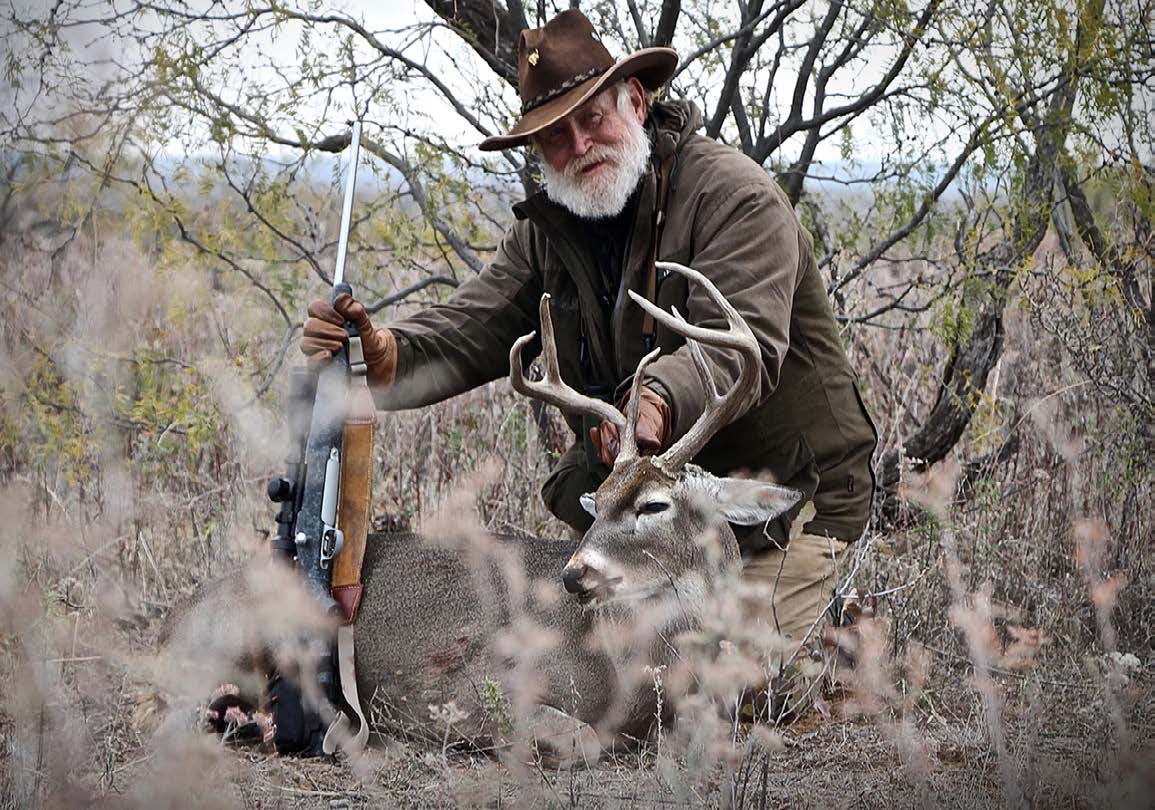
Per our affiliate disclosure, we may earn revenue from the products available on this page. To learn more about how we test gear, click here.





